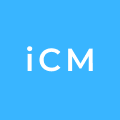One of the oldest in the world, the pharmaceutical industry has had to face many challenges over the years. One of the biggest challenges that still presents itself today is how to address batch traceability in Pharma when it comes to pharmaceutical manufacturing and its impact on pharmaceutical batch traceability, as well as broader pharmaceutical traceability software.
Importance of Batch Traceability in Pharma
For a multitude of reasons, pharmaceutical manufacturers need the ability to maintain pharmaceutical batch traceability throughout their entire process. This means being able to identify every single ingredient and process step involved in creating a production batch. When an issue arises, this information can help determine which action caused the problem and where it originated.
Pharmaceutical track and trace solutions help identify what went wrong and provide critical data for addressing challenges, supporting better decision-making and visibility across manufacturing operations. They also help organizations improve gmp traceability in pharma. A manufacturer should be able to provide an audit trail for every batch and retrieve this information quickly when needed.
When combined with other quality systems, such as SOP manuals or cGMP guidelines, pharmaceutical batch traceability becomes more potent. When companies pair GS1 standards with strong track and trace requirements for pharmaceutical manufacturers, the data doesn’t just sit in a report, it becomes a way to measure and improve how work gets done. Linking it to pharmaceutical traceability software helps teams spot trends, benchmark progress, and make better decisions across manufacturing and distribution.
DSCSA and Track and Trace Compliance
Brought to life by the FDA and Congress in 2013, the DSCSA (Drug Supply Chain Security Act) was designed to change how pharmaceutical products and raw materials are treated throughout the supply chain, including prescribing ways to trace the movement of products when packaged and distributed. The goal of the DSCSA was to increase the security of pharmaceutical products and patient safety.
As we approach the final enforcement phase of the DSCSA, with full package-level electronic pharmaceutical track and trace solutions expected by November 2024 following the FDA’s stabilization period, stakeholders must make sure they’re in full compliance.
The longer you wait to implement track and trace requirements for pharmaceutical manufacturers, the greater the risk of heavy fines, loss of licensure, or imprisonment.
GS1 Standards for Pharmaceutical Traceability
With so much data being captured, GS1 standards provide a structured way to manage supply chain data to ensure it’s always available, accurate, and understandable.
GS1 standards are part of a global framework used in over 100 countries to ensure pharmaceutical batch traceability systems can share data across the supply chain. Under the DSCSA’s Enhanced Drug Distribution Security provisions, trading partners must now exchange package-level transaction data in EPCIS format, together with GTINs and GS1 DataMatrix codes, forming the backbone of interoperable pharmaceutical traceability software.
Key elements include
- Critical Tracking Events (CTEs): Events that occur during a product’s lifecycle (packing, shipping, receiving).
- Key Data Elements (KDEs): The information related to those CTEs.
- Global Trade Item Numbers (GTINs) and Global Location Numbers (GLNs): Unique identifiers for finished goods and raw materials as they move through the supply chain.
Core Pillars of Batch Traceability in Pharma
Figure 1:Pillars of Batch Traceability

With regulations defined, partners must implement four main pillars of pharmaceutical batch traceability:
- Serialization – Assigning unique identifiers such as serial numbers, lot numbers, and expiration dates.
- Track and Trace – Understanding where a product has been, where it is now, and ownership changes.
- Verification – Confirming serial/lot numbers, movement, and transaction history.
- Reporting – Submitting accurate data on serialization, verification, and tracking to regulators.
Bonus, Aggregation: Beyond the core pillars lies Aggregation, creating “parent-child” links between every packaging level (items, cases, pallets). Aggregation makes compliance with DSCSA or GS1 easier and delivers measurable gains. For companies aiming to link compliance with operational excellence, aggregation transforms track and trace requirements for pharmaceutical manufacturers into a driver of safer products and leaner operations.
Strong traceability supports faster issue resolution, higher product quality, and clear supply chain visibility, all core outcomes of gmp traceability in pharma.
Final thoughts: Why Pharma Batch Traceability Matters
Batch traceability in Pharma safeguards consumers, ensures compliance with regulators like the FDA, and prevents theft or counterfeiting. Implementing modern pharmaceutical track and trace solutions allows organizations to track raw materials and finished goods across the supply chain.
With full DSCSA interoperability ramping up through 2025, adopting pharmaceutical traceability software aligned with gmp traceability in pharma is the smartest move.
Not sure where to start your batch traceability systems?
Contact us today to see how we help pharma leaders achieve end-to-end compliance.







